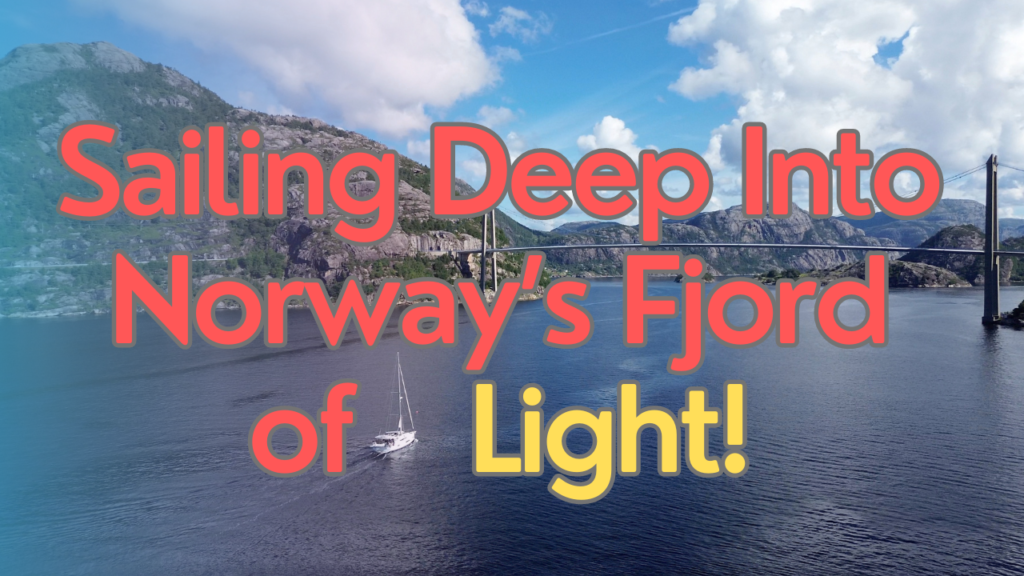One thing is for sure about Norway. It is a long, narrow country. It borders Russia – plus Sweden and Finland – at it’s northerly tip, called Nordkapp. Down at it’s southern terminus, some 1000 miles away, it’s adjacent to the tip of Denmark. That’s similar to the distance from Boston to Miami, or London to Gibraltar. It’s not unlike the profile of a lot of Norwegian people – tall and lanky. As we had plodded along on our way north last summer, taking some nibbles out of the coastline each week, it was easy to lose sight of this fact. Now, we just had a week in order to get down south within striking distance to shoot across to the Shetland Islands and still stay on schedule with our planned itinerary for the summer. There were a lot of miles in front of us, as we pulled away from the Lofoten peninsula.
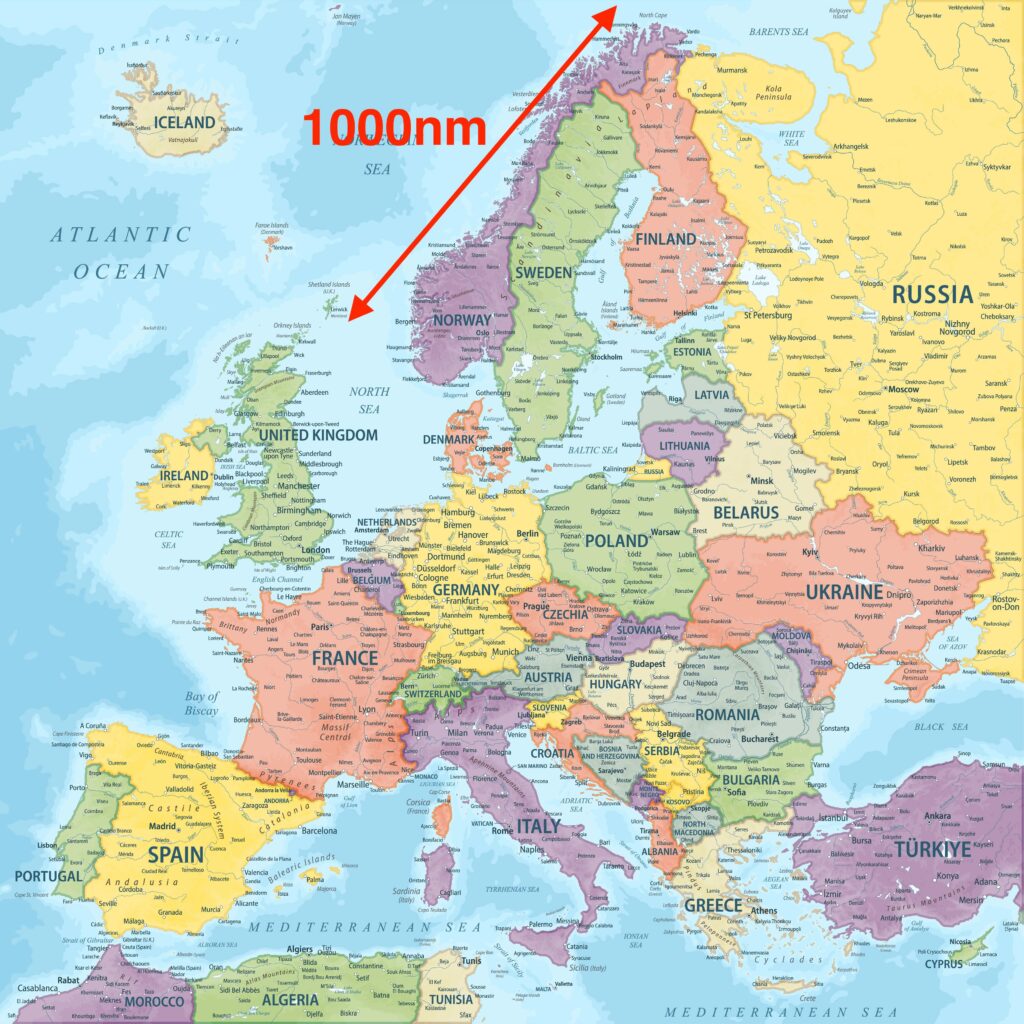
With the more extensive sailing we planned to do this year, we had decided over the winter to order new sails for the boat. The standard set from Jeanneau had seen a lot of wind and sun over the last six years we’ve owned Sea Rose. And we were excited, like a new set of wheels for the daily commute car, what these sails would offer to the boat’s performance. They were an ordeal to bring over in our checked baggage – being over the standard weight and eyed with suspicion by the gate agent as we struggled to lift them up on to the scale. But we managed to get them to Tromsø, up the ladder to the boat, and installed. The genoa worked fine, albeit a bit stiff from the brand new material, leaving the wrap around the furler a bit looser than we would normally like. But that seemed like an issue that would work it’s way through over time. The mainsail was stiff too. When we ran it up the track and then started to furl it inside the mast, it was clear it wasn’t rolling tight enough, and some of the sail had to be left unfurled outside the mast. It wasn’t the end of the world, that is, until we tried to unfurl it. The sail was so tight inside the furling cavity that it took all of winching strength on the outhaul to get it to start to unroll from the furler. With this stiff of a sail cloth, these sails were going to hold their shape and performance for a long time. But for now, they were a struggle to manage. We played around with different tensions on the mainsail halyard, outhaul, furling line and boom height, and eventually we thought we were getting the sail to unfurl more smoothly. Then, testing it out before our departure from Lofoten, the sail stopped unfurling just before the last wrap came off the furler. It was really stuck. Karen hoisted me up the mast so I could take a closer look. After a lot consideration and debate, we discovered that an adhesive chafing strip that had been added to the sail, meant to protect it from contact with the spreaders, had partially unpeeled, wrapped itself inside the mast, and stuck to the roll of sail inside there, acting like a vice to prevent the sail from unfurling any further. Although it had come off the sail, it’s adhesive strength was like the Kung Fu grip of GI Joe. With some delicate scissor work, we freed the adhesive strip enough that we could lower the sail. Before using this sail again, we needed the services of a sailmaker to sew down these chafe patches so that wouldn’t halt our progress again. There were no sailmakers anywhere near us. Even in all of Norway it looked like Oslo was the only option. Some quick internet searching by Karen revealed a business in the Shetland Islands. We’d be there in 10 days and the owner seemed very competent and understanding of our situation when I called him up. The result was that we’d only have one sail – the genoa – to work with, a handicap that we’d have to learn to adjust to.
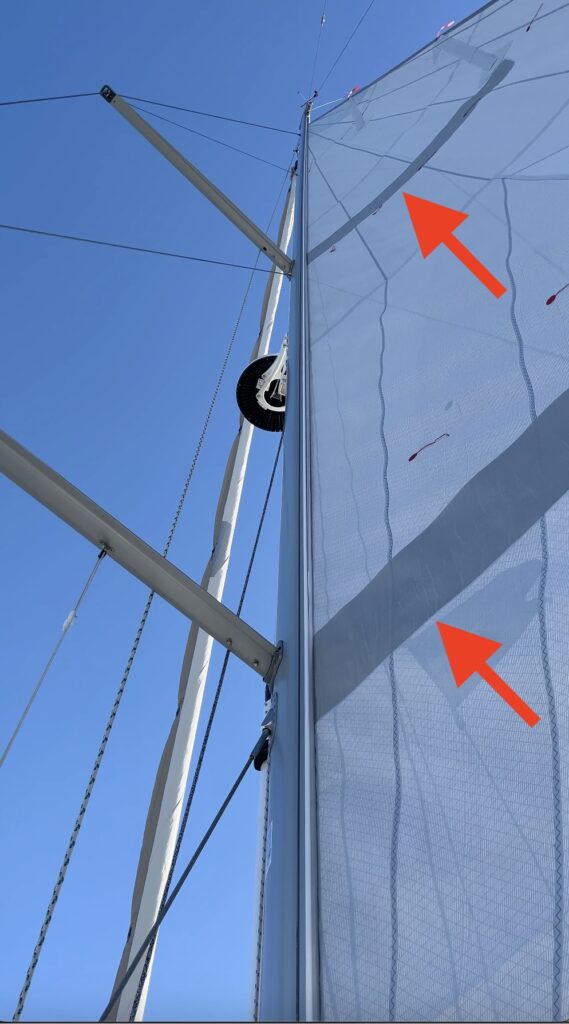

As it turned out, the next three days were going to be light northerly winds, to light to sail with. So we set off on our southbound pursuit under engine power.

Weather forecasts always seem like they get the eire of the public for their dubious quality, but here in Norway, perhaps because there’s less focus and fewer weather consumers this far north, the forecasts seem like they are even worse – as much wrong as they are right. In the afternoon, we welcomed an unforecasted 12 knot breeze from astern. We may have been out a mainsail, but we had a few feathers in our foresail quiver. We chose our bright, brand new asymmetrical spinnaker, with only one previous day’s worth of flight time from last summer.

She might be pink, but she might as well be a feisty redhead. She can get temperamental and need a lot of attention. As the wind built to 15 knots, we decided we had enough excitement and doused her back into the sail bag for another downwind day. Our destination was the offshore island of Lovund, some 82 nautical miles away. The sun was getting lower to the horizon as we headed south, but thankfully still a midnight sun as we pulled into the harbor at 9:30pm and headed out for a hike. Lovund is known for it’s puffins, a lot of puffins. This bird, with a super colorful beak, spends the winter in the Atlantic Ocean, but they return to Lovund in the Spring to reproduce. Fascinatingly, over 20,000 puffins return to Lovund on one specific day – April 14th – to lay their eggs, in the same nest under the same boulders that they used the previous year. There is so much predicability about their return that it has become a popular event to travel out to the island to see the skies filled with returning puffins. We had clearly missed April 14th, but the island is still protected through July to allow the puffins to do their nesting thing and it attracts visitors throughout the summer. We followed a nature path around the base of Lovundfjellet mountain to a high plateau where you can look up a vast slope of boulders leading up to the summit. To protect the puffin, visitors are not allowed to approach their nesting grounds. But a couple of fellow visitors, with their telescopic lens fit for a sports photographer at the end zone of an NFL game, and me with my diminutive zoom lens that came free with my Sony DSLR, sat and waited for a chance to record the flocks of puffins above our heads on our digital media. I’ll be honest. If you want to really see a puffin up close, visit the Norwegian Tourist Authority’s site. But give me a few kudos for trying!

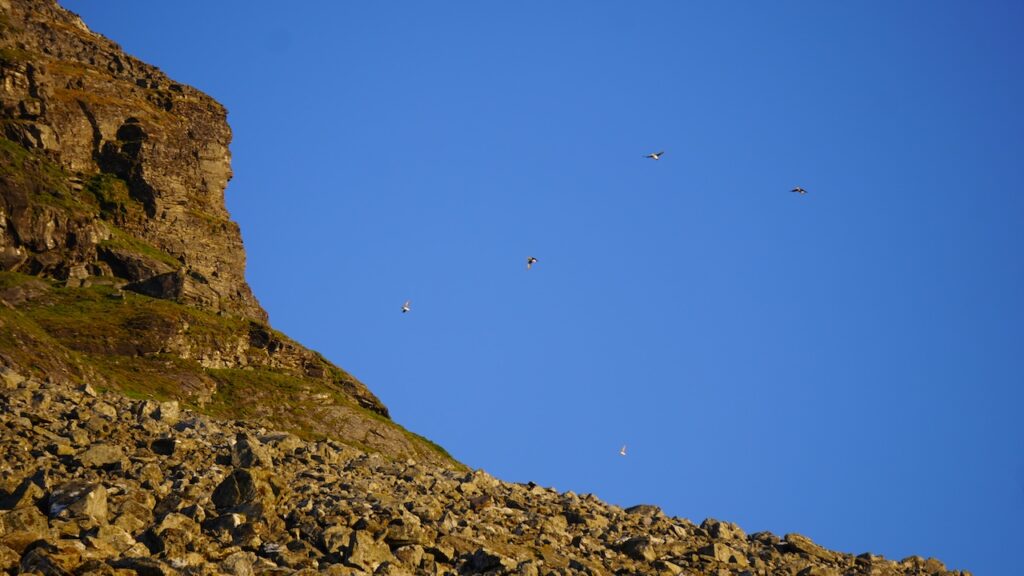
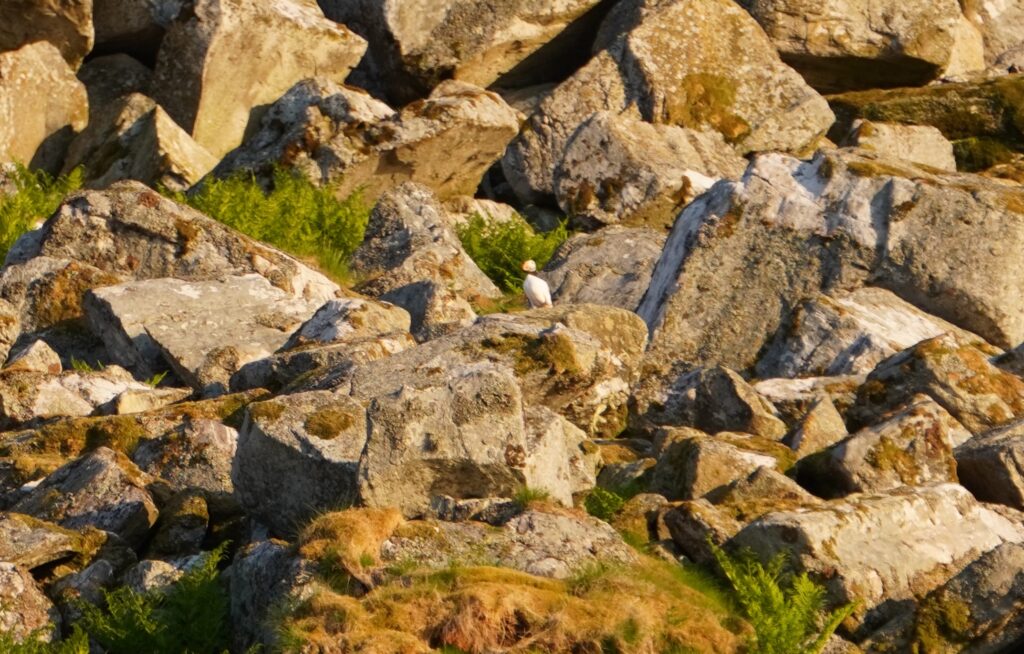
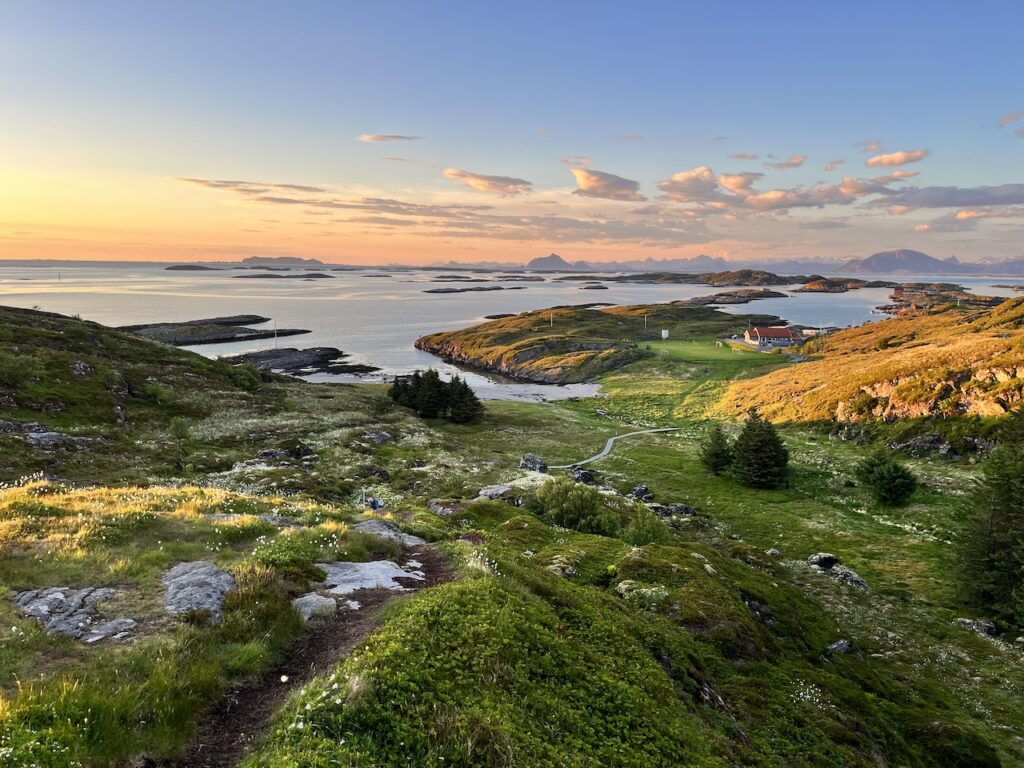
It’s still a long distance down to Kristiansund and after the scene of natural wonder on Lovund, it was time to press on and put more miles under the keel of Sea Rose. The next three days were comprised of long 10-14 hour stints behind the wheel, motoring, or motor sailing in light winds. If we had a mainsail, it wouldn’t have made a material difference. After one 12 hour day, making 65 nautical miles, we pulled into an isolated cove named – uniquely non-Norwegian – ‘Villa’. It had been a bumpy last few hours as we motored through headwinds and swell coming in from the ocean. A light but persistent rain fell. The guest pontoon was only a single-boat affair. But with no other sailboats in sight for the day, we felt reasonably good that the space would be empty. For the bargain price of 60kr (~$6), paid in an ‘honesty box’, we got a secure place to tie up and go below to get warm in the cabin. Our diesel heater was now paying dividends during two important watches – the evening and the morning. It was the kind of weather where you just want to tuck under a thick blanket with a warm drink and a good book, or a conversation with your spouse when you thought you had previously talked through all known earthly topics.

In the morning, enriched by the energy of a sound night’s sleep, we laced up our hiking boots for a brief reconnoiter ashore before we continued south. The previous night’s steady rain had made the walking trail mushy, squishy and extra moist. Then the rain returned. In the far distance we could see the trail leading onward to the local lighthouse, out of reach on this wet Spring morning. Built in 1839, it was the first coal-burning lighthouse in Norway. That is coal, not kerosene or whale oil or some other kind of light-emitting substance. Augustin-Jean Fresnel had already invented the Fresnel lens in 1822, a cylinder of prisms to focus light outward into a single plane, ideal for warning mariners of yore. But here in Villa, they relied on coal to keep a single, large flame burning, up to 10 meters high. You could think of it as Norway’s precursor to Burning Man!
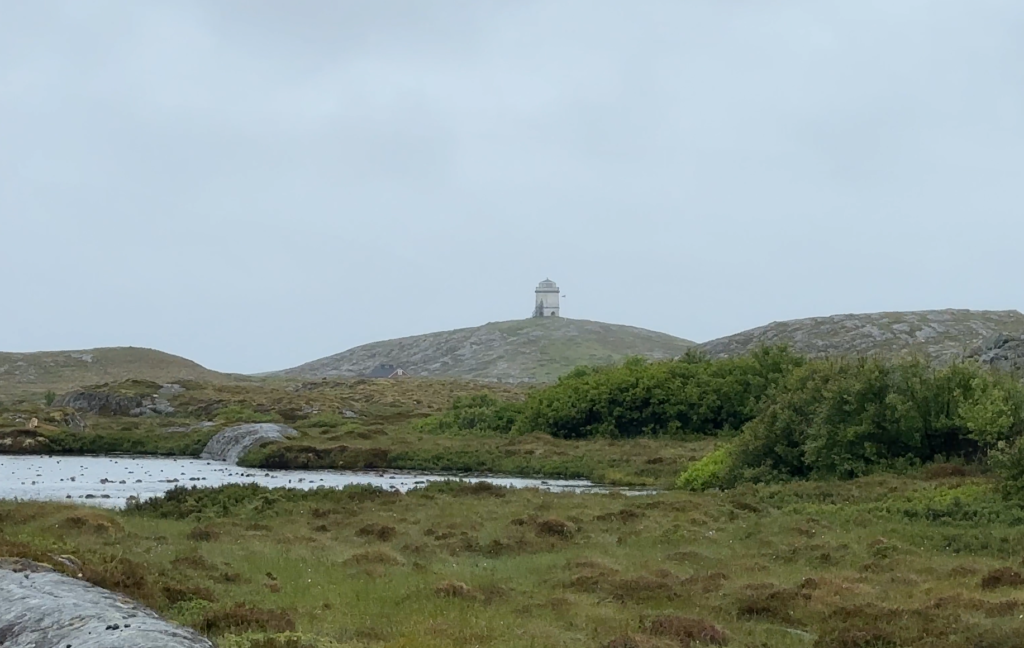
The coastline was sadly turning into more flatlands than the dramatic 500-1000 meter high ragged peaks that had previously guided us south. How quickly a scene can change. After winding our way around rocky islets – skerries as they prefer to call them here – and the uneven mainland, with our route on the chartplotter built of 20-30 waypoints a day, here it was unmistakably straight. As we continued south, I took over the watch from Karen at one point and I was astonished to see our next waypoint was two hours away. What to do with the free time! It was like an interstate highway with their propensity to stick to the straight-as-a-laser design, with cargo ships and even the famous Hurtigruten passing and approaching us.

There is a kind of peace in the straight and narrow. No big decisions, no big expectations. Like the passengers on the Hurtigruten, we could take the time to gaze from side to side, let our minds wonder, start or finish a book. We don’t do it often enough.
After a long day, we pulled into the guest pontoon at Kristiansund in an incessantly unwavering rain. On this rare occasion, we were pulling into a harbor that we had previously visited, and it felt immediately familiar, immediately fresh with memories of our time with Joy, Tony, Eric and Rhonda last Fall. Yet – equally – lonely without their company. And lonely without Norway. Tomorrow, we would be visiting the police station to present our passports and clear out of this arrestingly beautiful country. The start of our two day passage across the North Sea to the Shetland Islands was before us. One door, one page of the passport, closes, another opens. It was time for a good night’s sleep to better prepare for the next chapter, the next challenge.
****
Be sure to check out our latest YouTube videos, including this episode covering the splendid Lysefjord!
